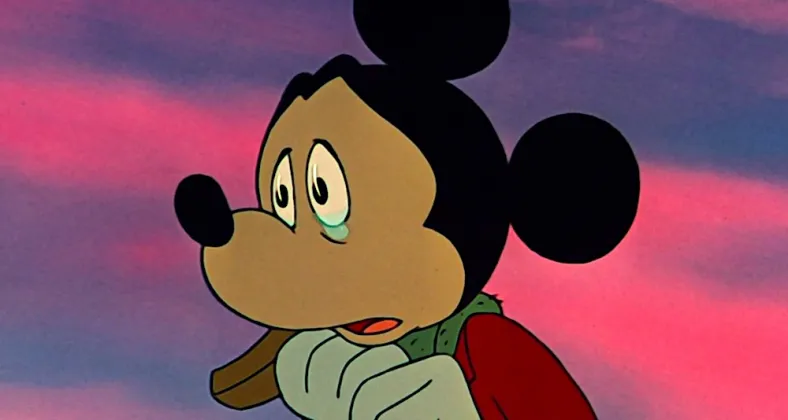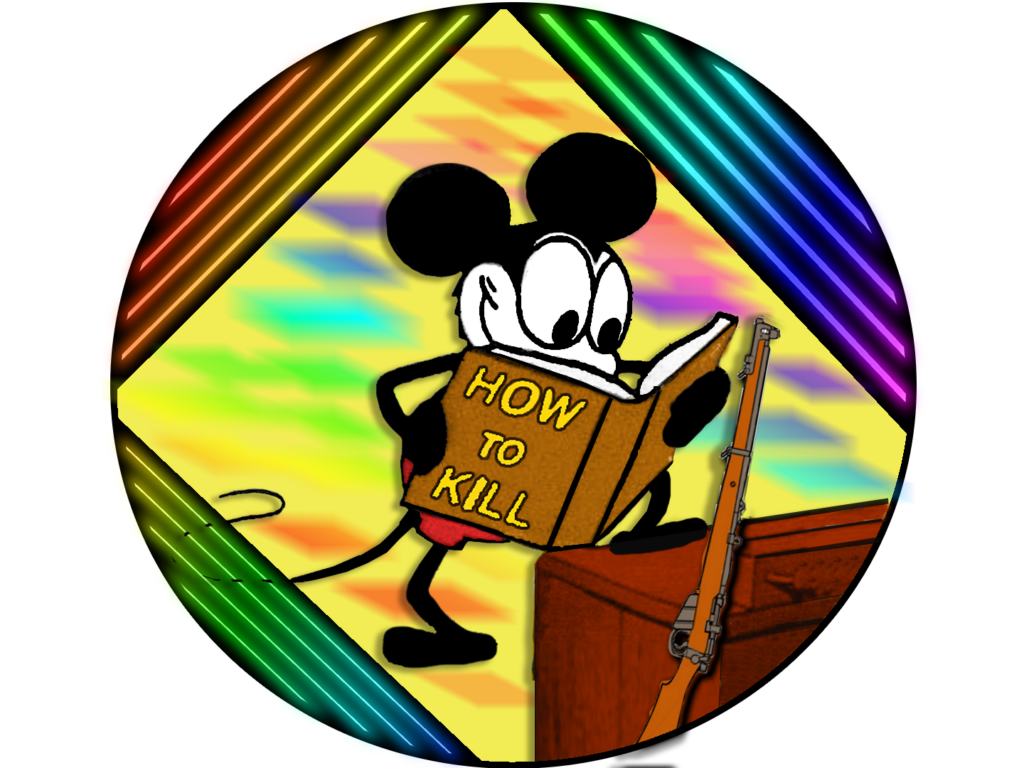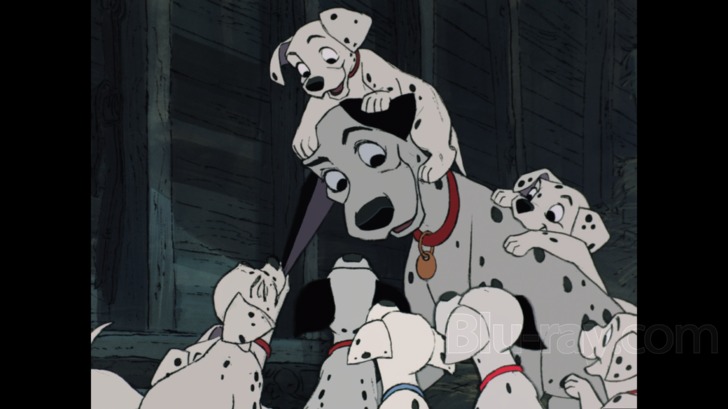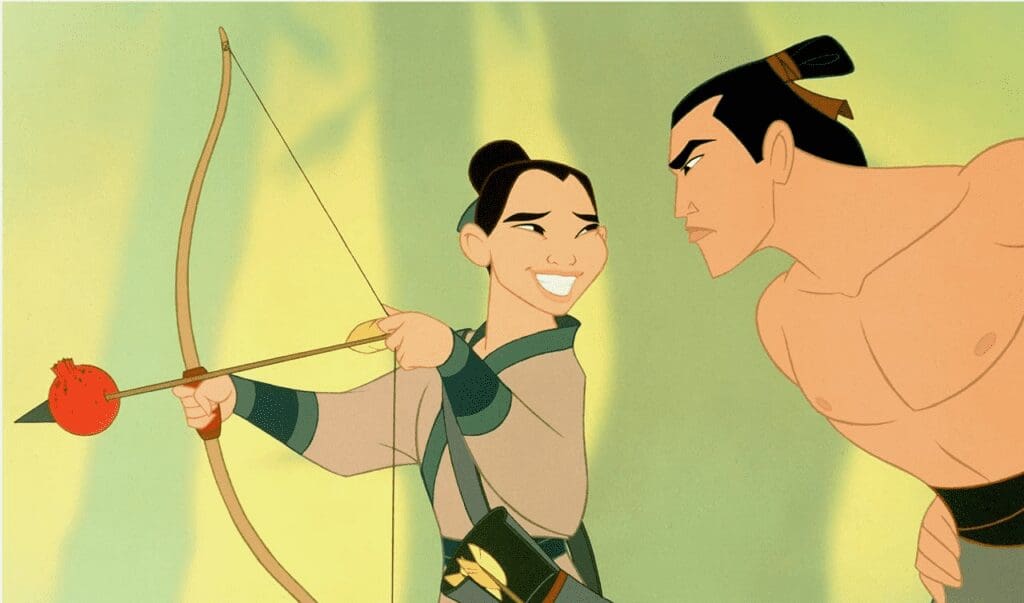
There is nothing Disney World hates more than the words “half-day park.”
Guests aren’t going to have more than one meal. They are likely to save their money for the “real parks.” It creates problems with the flow of people at night. Worst of all, guests cut their stay short by a day because they went from Hollywood Studios to Animal Kingdom. It’s all ghastly from Disney Park’s perspective. Animal Kingdom used to be a half-day park but the addition of Pandora, combined with its remote location (buses or Minnie-vans, no monorail) has now turned it into a full day trip.
Hollywood Studios is Disney World’s other half-day park.
Although, it didn’t used to be.
Hollywood Studios was one of Michael Eisner’s ‘me too’ ideas (back when ‘me too’ had a different meaning). He was rather famous for them. If he spotted something successful close by, he would have a Disney-fied copy run-up before the ink dried on the building permit (which Disney never has to file). This led to Knott’s Berry Farm’s Studio K suddenly being in competition with Disneyland’s Videopolis. Downtown Orlando’s Church Street Station deals with Pleasure Island’s overnight incursion into their bottom line. And Universal Studios woke up one more morning to discover that Disney World’s Hollywood Studios had just opened.

What is not well remembered at this point is that Hollywood Studios was at one time an actual working film and TV studio. The concept was that the guest would show up to take a ride on the Tower of Terror and since they were already there anyway, take the three-hour back-lot studio tour. Maybe be part of the audience for the new New Mickey Mouse Club. Or hop on a different tour and watch the animators creating one of the masterpieces of Disney’s 1990s Animation Renaissance. Maybe watch the Indiana Jones stunt show. Then, finish up by riding the Rocking Rollercoaster. At that point, congratulations, you’ve killed a whole day at the Hollywood Studios.
RELATED: Marvel’s Race Swapped Wonder Man Set To Resume Production For Disney+ January 2024
The first problem it ran into was the inherent stupidity of setting up a back-lot in an area that is 90 degrees in October and rains every damn day around three o’clock. Second, the talent didn’t want to move to hot-ass, muggy, central Florida. Third, Disney World is in the middle of a freaking gator-infested swamp. Expansion is expensive, so the space they had was the space they had. It couldn’t grow to fit the needs of a production that required it.
The final nail in its coffin was the death of hand-drawn animation. And that was the true tragedy of Hollywood Studios.
The heart of American animation stopped beating the day that shop was closed down.
What happened to Disney’s once legendary hand-drawn animation and why?
In this first part, we’re going to have to take a small trip back in time to discover that one.

Everyone knows that Disney animation struggled in the Seventies and Eighties. And everyone knows why. The death of Walt Disney.
As usual, everyone has got it wrong. A lot of the problems that Disney Animation had can be laid at the feet of Walt Disney himself while he was still alive. While he created some of the most daring and innovative all-time classics of animation, over the course of his life, Walt’s interests and engagement would change with time. The last animated film that held his full attention was Sleeping Beauty (1959). After that, his focus switched to live-action films. He would check in on the animated stuff maybe once a week but that was about it.
The production quality notably slipped with 101 Dalmatians. The use of partial cells here is obvious.

That was unheard of in a Disney animated film before then. It reeks of budgets being cut and belts being tightened. Don’t get me wrong, the Sixties Disney animated movies weren’t bad movies, but the quality of the artwork wasn’t as high as the superlative art design of Sleeping Beauty.
When Walt Disney died, his company became creatively stagnant. Everyone who tried to do something new ran into the wall of, “Is that what Walt would do?” The only projects that went forward were the ones that the company’s late founder had looked into doing at one time or another but had never pursued. Effectively, the company was rooting through Walt’s trashcan in search of inspiration. This is something of a limit to innovation.
After a near-fatal run-in with corporate raiders in the 1980s, Walt’s son-in-law Ron Miller was fired, and Michael Eisner and his team of Frank Wells and Jeffery Katzenberg were brought on board.
The last of the fails was the Black Cauldron, which was beaten at the box office by the Care Bears Movie (which had already been out for months). Black Cauldron was already pretty far along in production when the new regime took power, so its failure really wasn’t Eisner’s fault, but there is no explaining that to angry stockholders.
In a bit of desperation, Eisner and Katzenberg held the first of their famous Gong Shows. These were big pitch meetings with all of the company’s creative types. The two winners of that first were Oliver and Company and The Little Mermaid.
The rather underrated Oliver and Company is, to my mind, the real beginning of the Disney Renaissance. While not as famous as The Little Mermaid, it showed a great deal of innovation and broke with a lot of long-standing art practices that had once defined but were now shackling the studio’s animation department.


These shots weren’t concepts. They were used as background art in the film itself.
That is the real point of this article.
Take a good look at them again. There is an intensity to the hand-drawn artwork that computer animation can’t get anywhere near. The artist drew on his memories and how they influenced his emotions to produce these layouts. This is what Manhattan at sunrise felt like to him. There was an attempt by his heart to touch yours when he applied brush to paper to create this. This is why hand hand drawn animation is so superior to CGI.
Anyway, it was also the first Disney animated film to feature the songs of Ashman and Menken, whose work would define the music of the Disney Renaissance.
RELATED: Disney to Buy Cocomelon From Cancel Media?
While I will be dragging CGI a lot in this series, I will not say it doesn’t have its place in animation because this was also the first of the films to use computers to aid in the production of hand-drawn in a way that the old cell and layout system simply could not.
The story was, well, indifferent to be honest. It was just a retelling of Oliver Twist with dogs and cats, but it was serviceable. It hit the right beats where it was supposed to. It did its job. Oliver and Company did well enough for the company to move forward with some confidence. This was when the crushing goal of one picture a year was set.

The first of the once-a-year wonders was The Little Mermaid. It was kind of a bridge movie. While it was the first of the new Princess movies, it was also the last of the old ones. In the old Disney Princess movies, the conflict was always external. It was man versus man or rather princess versus evil queen, but you get my point. However, after the success of The Little Mermaid, this (kinda, sorta) happened:
Jeffery Katzenberg: You animators are awesome! Little Mermaid is a box office monster! What else have you got for me?
The answer was that they had this terrific idea. Treasure Island… But in S-P-A-C-E!
Katzenberg (blinking in shock at such a bad idea): I’ll think about it… Maybe. But in the meantime, Richard Williams looks like he’s finally going to complete that movie he has been making for thirty freaking years: The Thief and the Cobbler. Come up with your own Arabian Nights-themed movie and beat that one to the box office. Make sure it has a thief in it.
A little disappointed the animators left the Presence.
RELATED: Nelson Peltz Blocked From the Disney Board of Directors?
Animator 1: So, what do we do?
Animator 2: Ali Baba and the Forty Thieves?
Animator 1: Nah, too violent for a kid’s movie. How about Aladdin?
Animator 2: Well, not too violent, but Aladdin isn’t a thief either.
Animator 1: He is now.
Animator 2: Isn’t this making a thief the hero a little problematic for a Disney kid’s movie?
And the answer to this question changed everything.
Animator 1: Not if we make him a better person by the end of the story. Aladdin’s journey to becoming a better man is the real story here. Everything else is incidental and in service to this goal.
Animator 2: Brilliant! Let’s do lunch!
Aladdin was where they first changed the nature of the conflict to Man versus Himself. The conflict became internal and it was all about identity. Jaffar was a pretty good villain even if the parrot managed to be even more annoying than Robin Williams. However, defeating Jaffar was the anti-climax. Just some cleaning up that needed to be taken care of. The real climax of the story was Aladdin’s adopting a new identity as a more noble version of himself. Casting off the glamour of being a fake prince to in order to become a real one.

Aladdin cost 30 million to make and raked in about half a billion worldwide which made it a major hit (in 1992). So, the Animators went back to Katzenberg.
Animator 1: So, about Treasure Island…in S-P-A-C-E!
Katzenberg: That still sounds kind of original. What else is out there that you can rip off? Anime is starting to take off now right? Some Japanamation kid’s thing, maybe?
Animator 2: What, like Kimba the White Lion?
Katzenberg: Sounds perfect! Simba the Lion or whatever. I already love it!
RELATED: Leak Of Marvel’s Echo And Daredevil Fight Scene From Disney+ Show Leaves Fans Shocked And Dismayed
The theme of identity was explored more thoroughly and quite explicitly in The Lion King. The Prince who blames himself for the death of his father the Great King and abandons his identity, to run off into the forest and live as a wastrel. Again, the climax of the film isn’t defeating his uncle Scar. It is when Simba chooses to resume his true identity. Now, the Prince as hero and redeemer. This is literally one of the oldest stories there is. The first telling of it being the murder of the god Osiris by his brother Set and his son Horace avenging his father, then ascending his throne.
Another well-known aspect of The Lion King was the fact that it was viewed as a movie about African American fatherhood. Despite the fact that it starred Mathew Broderick and half the cast was white, the producers made the absolutely brilliant decision to cast James Earl Jones as Mufasa.
Preening is very important to Lefties and at a box office haul of three-quarters of a billion dollars worldwide, there was a lot to preen about. The Lion King proved to them that they could both virtue signal and make an absolute ton of money. Everyone was delighted with the result.

The Animators went back to their boss. Or rather his boss since Katzenberg was out by then:
Animator 1: So, about Treasure Island in…
Michael Eisner: No. Look we have a really good thing going here with ethnically friendly animation, Jim Hawkins in SPACE is not ethnically friendly because being English just ain’t ethnic.
Animator 2: Well, what if we make Jim…
Eisner: Not. Ethnic. Also, see if you can make it a Princess Movie. Beauty and the Beast raked in north of 400 million. If we make an Ethnic Princess movie, we should crack a billion, easy.
Pocahontas, made $300 million worldwide so it could hardly be viewed as a failure given the budget of $55 million, but when you are expecting a billion-dollar ROI it’s no reason to cheer either.

After a bit of soul searching, Disney decided they were completely right in the first place and that there was nothing wrong with their formula, it’s just that the story didn’t really give the protagonist a lot to do except be romanced by John Smith. Yes, she was exploring her identity as a Native American Princess, but she was almost a passive character in her own story.
Eisner: Okay, we’ll try this again but this time we need a more actively heroic Princess.
Animator 1 (absolutely stone-faced): What’s in it for us?
Eisner (hangs head): Make us money and I’ll green light…(sigh)…Treasure Planet.
After digging they came up with the more or less true story of Fa Mulan.
In Mulan, the Disney Identity Quest becomes the absolutely central MacGuffin that all other events are in service to.
Look at me
If I wear a mask
I can fool the world
But I cannot fool my heart
Who is that girl I see
Staring straight back at me?
When will my reflection show
Who I am inside?
Mulan was another mega-hit. And it was the last.

The 1990s Disney Animation Renaissance had been a juggernaut demolishing everything in its path for ten years. Then all of a sudden it was like it ran into the side of a mountain.
So, what happened?
Several things.
First. SJW’s encroachment turned the identity quest into a plea for feminism at the expense of the story.
Second, the monstrous success of Pixar. Those movies only came out once every three years, but they were all huge (we’ll be looking at that in part III).
Third and the saddest of all. The lightning in a bottle triumph of Rugrats the Movie.
Indeed, and truly, I have no idea at all as to why some flick about toddlers and dookie jokes blew the doors off, but at 100 million dollars, it absolutely did. And the production cost was a paltry 25 million.
RELATED: The Dark Herald: Christmas Ghost Stories, Terry Pratchett, And More!
Suddenly everybody was making crappy movie versions of 2D animated kid shows. SpongeBob, Pokémon, the Simpsons, Hey Arnold, more Rugrats movies. Somewhere in the neighborhood of fifteen to twenty of these things flooded the marketplace in the early 2000s. The only thing they had going for them was brand recognition. Why spend money on the expensive art of premium hand-drawn animation when the audiences are happy as a pig-in-shit to eat slop like Doug’s First Movie?
Disney was no better than anyone else. In fact, they were worse.
Due to Blockbuster’s abusive late fee system and the fact that it was a lot harder to pirate a DVD than it was VHS tape, there was a volcanic eruption in DVD sales in the early 2000s. If you as a consumer were likely to watch a movie more than once, it made more sense to buy it rather than rent it than take a chance on Blockbuster’s predatory late fees.
The DVD Bubble was inflated with all kinds of terrible sequels to Disney’s classics as well as their brand-new ones. Cinderella, Mulan, Tarzan, Sleeping Beauty, The Lion King, Aladdin, the Hunchback, and freaking Bambi, all got multiple, unwanted, and cheaply made straight-to-video sequels. Disney blatantly prostituted the reputation of properties they had once held dear and had had the sense to dole out with an eye dropper in very rare re-releases.
With all of that garbage being flung everywhere, the reputation of 2D animation went south so far as the typical American family was concerned. The Disney Renaissance ended with the box-office failure of Home on the Range. Nobody went to see it because the trailers made it look like cheap-ass DVD crap. That was how everyone responded to it.
The unthinkable happened overnight. The animation department at Hollywood Studios was shuttered, and the artists were all fired.
Disney hand-drawn animation ended not with a bang but a whimper
What do you think of the Death of Disney Animation? Leave a comment and let us know.
NEXT: The Dark Herald: Christmas Ghost Stories, Terry Pratchett, And More!

Leave a Reply